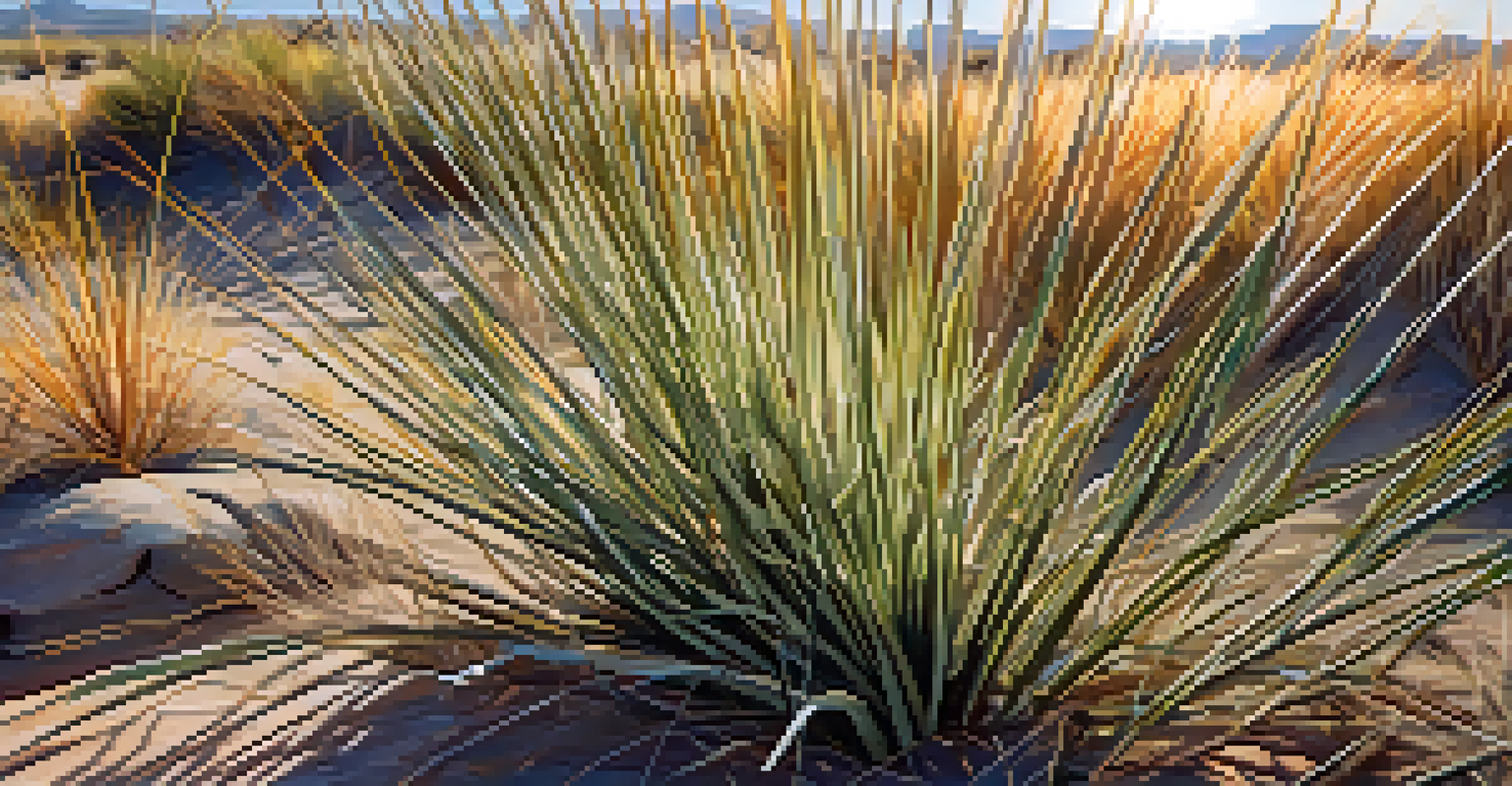Invasive Species Threatening the Sonoran Desert Ecosystem

Understanding Invasive Species in the Sonoran Desert
Invasive species refer to non-native organisms that disrupt local ecosystems. In the Sonoran Desert, these species often outcompete native plants and animals for resources. The introduction of these species can lead to significant ecological imbalances, affecting the survival of indigenous species.
Invasive species are a significant threat to biodiversity, and understanding their impact is crucial for effective conservation efforts.
For example, the buffelgrass, introduced for livestock grazing, has spread rapidly and poses a severe threat. It can outcompete native flora and alter the fire regime of the desert. This not only impacts the plants but also the wildlife that depends on them for habitat and food.
Understanding the nature of these invasive species is crucial. It helps us recognize their impact, which is essential for conservation efforts aimed at preserving the unique biodiversity of the Sonoran Desert.
Key Invasive Species Affecting the Ecosystem
Several invasive species are particularly notorious in the Sonoran Desert. Among them, the Africanized honey bee has established a strong presence, competing with native bee species for resources. This can lead to declines in native pollinators, affecting the plants that rely on them.

Another significant threat comes from non-native plants like the tamarisk, which consumes large amounts of water. This not only diminishes water availability for native species but also alters the landscape. The competition for water can be devastating during drought periods, which are common in this arid region.
Invasive species threaten biodiversity
Non-native organisms in the Sonoran Desert disrupt local ecosystems, outcompeting native species and leading to ecological imbalances.
Finally, the introduction of feral animals, such as cats and pigs, has a profound impact on local wildlife. These animals often prey on native bird species and disrupt natural behaviors, leading to declines in populations that have evolved in isolation.
The Impact of Invasive Species on Native Flora
Invasive species can severely affect the native plant life of the Sonoran Desert. For instance, the spread of non-native grasses can overshadow delicate native plants, limiting their sunlight and growth. This not only reduces plant diversity but also affects the animals that depend on these plants for food and shelter.
The greatest threat to our planet is the belief that someone else will save it.
A classic example is the spread of cheatgrass, which can quickly outcompete native grasses. Its dominance changes the composition of the landscape, leading to a less resilient ecosystem. This shift can make native species more vulnerable to disease and climate changes.
Furthermore, the loss of native plants can lead to erosion and habitat loss, creating a domino effect that impacts the entire ecosystem. The intricate web of life in the Sonoran Desert relies on the balance between its numerous plant species, making this threat particularly concerning.
How Invasive Species Impact Wildlife
The presence of invasive species in the Sonoran Desert doesn't just threaten plants; it also endangers wildlife. Many native animals, such as the desert tortoise and various bird species, rely on specific plants for their survival. When these plants are outcompeted, the animals are left without food sources and habitats.
Moreover, invasive predators, like feral cats, directly threaten native birds and small mammals. These predators can decimate populations of species that have no natural defenses against them. This predation can lead to local extinctions, further diminishing the biodiversity of the desert.
Climate change worsens invasion issues
Rising temperatures and altered precipitation patterns create favorable conditions for invasive species, exacerbating their impact on native flora and fauna.
The decline in wildlife also affects the ecosystem's health. Each species plays a role in maintaining the balance of their environment. As native species disappear, the intricate relationships that sustain the ecosystem begin to unravel, leading to further degradation.
The Role of Climate Change in Invasive Species Spread
Climate change exacerbates the challenges posed by invasive species in the Sonoran Desert. Rising temperatures and altered precipitation patterns can create more favorable conditions for these non-native organisms. This allows them to thrive and spread even more rapidly than before.
For instance, increased rainfall can help invasive plants establish more easily, while droughts can stress native species, making them more vulnerable to being outcompeted. This cycle of climate change and invasive species creates a feedback loop that can devastate the ecosystem.
Addressing climate change is, therefore, crucial in the fight against invasive species. By mitigating climate impacts, we can help protect the resilience of the Sonoran Desert's native ecosystems and reduce the likelihood of further invasions.
Conservation Efforts to Combat Invasive Species
Conservation organizations are actively working to combat the threat of invasive species in the Sonoran Desert. Efforts include monitoring and managing invasive populations, restoring native habitats, and educating the public about the importance of biodiversity. Community involvement is key to these initiatives.
Programs aimed at removing invasive plants, like buffelgrass and tamarisk, have shown promise. Volunteers often participate in removal efforts, helping to restore balance to the desert ecosystem. These hands-on projects not only benefit the environment but also foster a sense of community and stewardship.
Conservation efforts are crucial
Community involvement in monitoring, managing invasive populations, and restoring native habitats is essential for preserving the Sonoran Desert's unique ecosystem.
Furthermore, public education campaigns raise awareness about the impact of invasive species and encourage responsible practices, like cleaning hiking gear to prevent the spread of seeds. By fostering a culture of conservation, we can collectively make a difference in preserving the Sonoran Desert's unique ecosystem.
The Future of the Sonoran Desert Ecosystem
The future of the Sonoran Desert ecosystem hangs in the balance due to the ongoing threat of invasive species. As we continue to face environmental changes, the resilience of this unique habitat will be tested. Without concerted efforts to manage and mitigate these threats, we risk losing a significant part of our natural heritage.
However, the growing awareness and involvement in conservation efforts provide a glimmer of hope. Communities are coming together to protect their local ecosystems, emphasizing the importance of preserving biodiversity. With education and action, we can make strides toward a healthier desert.

Ultimately, the survival of the Sonoran Desert ecosystem depends on our commitment to understanding and addressing the challenges posed by invasive species. By prioritizing conservation, we can ensure that this remarkable landscape continues to thrive for generations to come.